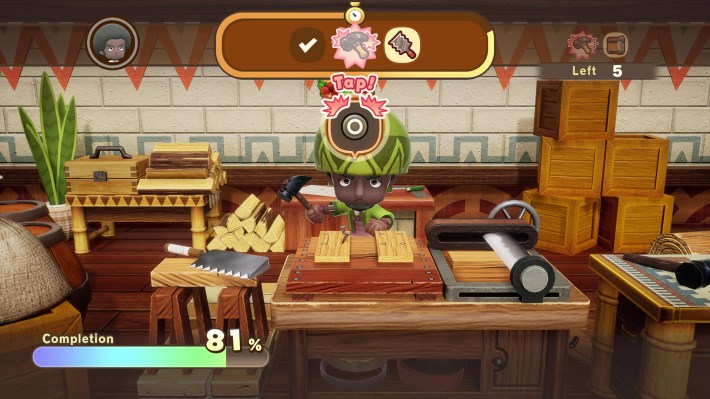Several minutes into Fantasy Life i: The Girl Who Steals Time, the leader of the kingdom I crash landed on told me that he couldn't help me fix up the bone dragon I rode in on because I don't have a life. And by life, he meant a job. In The Girl Who Steals Time, jobs are called lives. "Because without a Life, what are we?" the leader asked. "How are we supposed to help others? Without Lives, we are no better than the monsters that roam outside the gates."
This felt like a direct shot to my gut, coming just over a month since I was laid off from a job I've been trying to untangle from my self-worth. If I wanted to help my bone dragon, I needed to get one of the 12 starting jobs. This game is both simulation and role-playing, so the jobs you can do — or, in The Girl Who Steals Time speak, Lives you can have — are resource gathering, crafting, alchemy, or several different fighting styles. I choose cooking to start — first, boiling eggs then making more complex dishes. Naturally, I also have debts to pay off, so I have to do favors to earn money. These are largely resource gathering, but then require me to pick up new jobs. I take up fishing, figuring it will complement the cooking gig. (Both fishing and foraging require a small, timed-based minigame to complete.) I fish and forage for a while to help out around town, switching between those two and several others, like mining, to earn money. It's a satisfying loop in itself, but The Girl Who Steals Time continues to change and shift as more pieces of the world opens up. The game feels like a mixture of Animal Crossing: New Horizons and The Legend of Zelda: Tears of the Kingdom. And that's where taking on more jobs — again, Lives — become more crucial.

After leveling up your jobs a bit — of particular importance before moving on is being able to fight — you head out into the world to explore, opening up parts of the map by unlocking tall towers and fighting monsters in mysterious shrines. This is where I'm at in the game, around its second chapter. Laterally, The Girl Who Steals Time continues to evolve by introducing community and village-building, which I’ve only seen a fraction of. What’s impressed me so far is that developer Level-5 has collected beloved elements from other games to create something that doesn't just feel like it's been copied-and-pasted from somewhere else. That's due to the charming story and art style, which is over-the-top in a way that feels self-aware and a bit cheeky. Or, at least, that's how I'm choosing to read a game that immediately told me to get a job.
The sheer number of jobs, and the ways you can mix and match jobs to get stuff done around the island, is what makes the game particularly interesting. So far, I don't feel pushed into any direction or job that I'm simply not interested in. By focusing on the ideas I do care to pursue, like resource gathering and crafting, I can make the game what I want it to be. Someone who chooses a different set of jobs will surely have a different experience.
It's my first time playing the Fantasy Life series, the first game of which, simply called Fantasy Life, was originally released in 2012 on Nintendo 3DS. It was released globally in 2014. It was a different story, but the original concept — centered on Lives, or jobs — remains the same. The Girl Who Steals Time was a launch title for the Switch, with a special version that includes "improved resolution, framerate and faster load times," per the eShop store, and the game itself came out for other consoles on May 21. I'm not playing it on Switch, but I suspect it'd be a perfect game for the new console because it’s got the Nintendo vibe. I've been playing on Steam Deck, where it’s the sort of game I'm enjoying in short little bursts right before bed. The lack of urgency in moving forward is key for me; I don't feel like I'm missing out by figuring out how the different jobs work before moving out into the big, open-world game.


